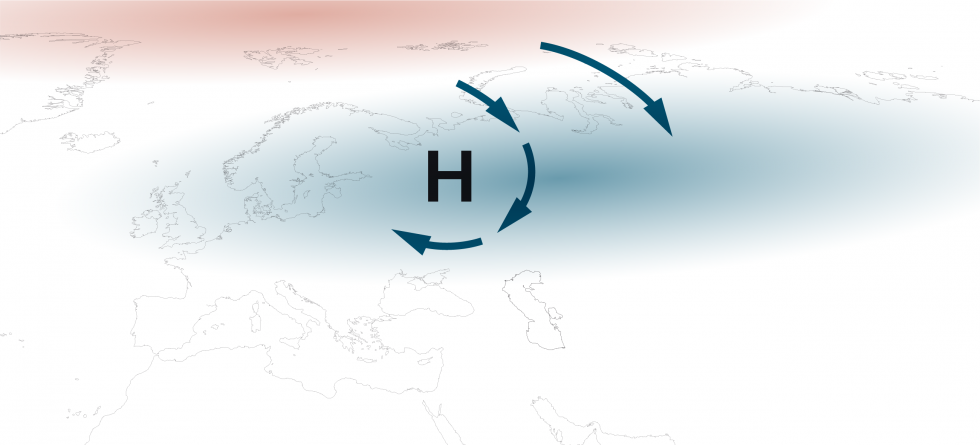
The last decades have seen a steady warming of the Arctic and a corresponding reduction in sea ice cover. At the same time significant changes have occurred in the atmospheric circulation patterns, shaping weather in Europe and Asia.
“We have studied a phenomenon called “atmospheric blocking” over the Ural Mountains. Such a situation is often associated with cold winters in Europe and Asia, as a blocking high-pressure system directs cold air masses over the European and Asian continents for days to more than weeks at a time”, says Camille Li, professor of meteorology at the Geophysical Institute at the University of Bergen, and the Bjerknes Centre for Climate Research.
A group of researchers, coordinated by Stephen Outten, senior researcher at the Nansen Environmental and Remote Sensing Center and research leader at the Bjerknes Centre, has recently analyzed the scientific debate around the phenomenon.

Cause and effect
“If we consider the last occurrence of Eurasian winter cooling, was this mainly driven by the loss of sea ice, or was it natural variability?” Camille Li asks.
“In the first case changes in the sea ice lead to a response in the atmospheric circulation, which again influences winter temperatures. In the other case, natural variations in the atmospheric circulation cause a response in temperatures both over the continents and in the Arctic, in addition to a change in sea ice,” says Li.
The debate is about cause and effect. While some studies find a strong connection between sea ice loss in the Arctic and cold winters in Eurasia, other studies conclude that such cooccurrences are random, natural variations, and that there is no cause-and-effect relation between these phenomena.
Learn more about this discussion in these articles:
- Chasing the strongest winds
- Cold winters natural despite warming climate
- Podcast about the jet stream
A polarized debate
The authors see two reasons for the confusing debate. First, this has been posed as a yes-no question, promoting polarized views.
Second, Outten and Li think some of the studies with conflicting views show results that actually agree with one another, and that the conflict is introduced through the interpretation of the results.
While some have asked “Was the last cooling episode more likely considering the present loss of sea ice?”, others have asked “Are such cooling events more likely now, in this time period of great sea ice loss, than in the pre-industrial time, when there was more sea ice?”.
Camille Li points out that these questions are different. The answer may be yes to the first, and no to the second.
The golden middle way
In their conclusion, Outten, Li and their colleagues, propose a framework to unite the two sides of the debate.
Apart from a simple yes or no, the researchers have developed a new perspective taking both sides of the arguments into consideration.
“In our view it is more constructive to consider whether sea ice loss makes cold Eurasian winters more likely, together with other factors influencing such temperature variability. That way, we consider both internal variations in the climate and a reduction in sea ice,” says Camille Li.
Asked whether sea ice loss makes cold Eurasian winters more likely, she replies that in general, it can, but that the effect is probably small compared to factors.
Reference
Outten, S., Li, C., King, M. P., Suo, L., Siew, P. Y. F., Cheung, H., Davy, R., Dunn-Sigouin, E., Furevik, T., He, S., Madonna, E., Sobolowski, S., Spengler, T., and Woollings, T.: Reconciling conflicting evidence for the cause of the observed early 21st century Eurasian cooling, Weather Clim. Dynam., 4, 95–114, https://doi.org/10.5194/wcd-4-95-2023, 2023.

